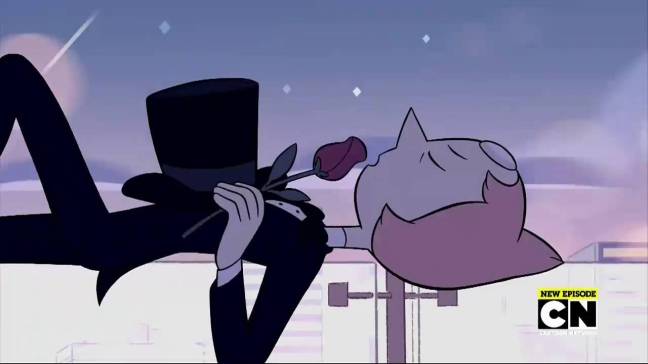Can you name any of these characters?
Skillfully utilized literary devices work their magic and capture your attention without you even realizing what’s happening. You don’t even need to know the first thing about a literary device for it to do its job. Advertisers and creators know this and take advantage of it whenever the opportunity arises. If you can name any of these cartoon characters, you have been influenced by three tricky little devices: alliteration, consonance, and assonance.
Understanding this trio isn’t essential, but it gives you a handle on the ways that people craft their works, giving you a new layer of enjoyment and appreciation for the stories (and songs!) you love. Cartoon fans might know that any cartoon with catchy songs likely utilizes this trio. And if you’re a V for Vendetta fan, becoming familiar with these three devices gives you some cool insight into V as a character.
A Quick Definition
First of all, let’s get to know these sound devices better with a quick look at their definitions.
Alliteration: The repetition of consonant sounds at the beginning of closely grouped words, or at the beginning of syllables. The part about syllables can trip people up on English class tests, but this nuance doesn’t matter much for people who casually enjoy looking at the bones of what makes creative works really shine.
Consonance: The repetition of consonant sounds in closely grouped words (not only at the beginning of words or syllables, but also in the middle and at the end).
Assonance: The repetition of vowel sounds in closely grouped words
Notice that each of these definitions specifies similar sounds. There are situations where words might have a similar sound without having a common letter, or a common letter without having similar sounds. Take this example: city search is consonance, but city concrete is not. You might need to read these words out loud to hear the difference.
These three devices are used to:
- Give words a rhythmic quality and beauty (especially in songs and poems)
- Emphasize an important group of words
- Increase memorability (both for the audience and for anyone gearing up to recite them).
They often appear in poems, songs, and plays (especially Shakespeare), but are not limited to these three genres. Novelists, filmmakers, animators, comic artists, and even commercial writers make use of them. You probably know a few titles that utilize these literary devices to give their creation a more memorable name:
- World of Warcraft (alliteration and assonance)
- League of Legends (alliteration)
- Fantastic Four (alliteration)
- Teen Titans (consonance)
- Eaden of the East (assonance, at least in the English title)
- Super Smashbrothers (consonance)
- Fire Emblem Echoes (notice how this assonance does not include the first or last “e” because they are not the same sound)
- Teenage Mutant Ninja Turtles (two different sounds of consonance)
A Universe of Songs

To start us off, let’s take a look at how these sounds enhance songs. I’ve selected two from one of my favorite cartoons, Steven Universe, as our model.
First up is the show’s catchy theme song. I’ve highlighted clusters of similar sounds to make them more visible, but did not highlight all examples.
We are the Crystal Gems
We’ll always save the day
And if you think we can’t
We’ll always find a way
That’s why the people of this world believe in
Garnet, Amethyst, and Pearl and Steven!
Our literary trio help make this song flow and gives it great musicality.
Notice how the “w” sound comes at the beginning of words, but it also comes up in the middle of words? This makes it appear to be consonance, but take a look at “always” and count the syllables. The “w” comes at the beginning of the second syllable, making this alliteration.
Now for the “a” sounds. We have the repetition of two different sounds, a short “a” and a long one. These are both examples of assonance.
The theme even manages to work in some consonance. We have the repetition of that hard “t” in the last line, disrupted only by Pearl’s name. This disruption actually serves to call attention to the last line and make the close with Steven’s name even more impactful. It’s almost like Steven makes everything complete.
As a result of this excellent use of clustered sounds, the song sounds smooth, lyrical, and catchy.
Just When You Thought it was Over

I’ve included a second Steven Universe song so that you can take another look at these literary devices. Again, I did not highlight all examples.
I was fine with the men
Who would come into her life now and again
I was fine ’cause I knew
That they didn’t really matter until you
(notice how the w sound appears at the beginning of most words, but it also appears at the end of “now” and “knew”, making it consonance)
I was fine when you came
And we fought like it was all some silly game
Over her, who she’d choose
After all those years I never thought I’d lose
It’s over, isn’t it? Isn’t it?
Isn’t it over?
It’s over, isn’t it? Isn’t it?
Isn’t it over?
You won and she chose you
And she loved you and she’s gone
It’s over, isn’t it?
Why can’t I move on?
(Although there are a lot of repeated sounds in the first four lines of this stanza, they are not generally counted as a sound device because they are just the same words used over and over.)
War and glory, reinvention
Fusion, freedom, her attention
Out in daylight my potential
Bold, precise, experimental
(Take a look at the underlined sounds in this stanza. These are not consonance or assonance. Although they are the repetition of similar sounds close together, these particular examples are rhymes. They aren’t just similar, they are identical!)
Who am I now in this world without her?
Petty and dull with the nerve to doubt her
What does it matter? It’s already done
Now I’ve got to be there for her son
Sound devices enhance this song, giving it the flow and feel appropriate to this impactful scene.
Remember Remember…
Keep in mind that consonance, alliteration, and assonance can be used for purposes other than improving the flow and rhythm of songs and poems. Fans of V for Vendetta are familiar with the impact that these three literary devices can have on speech.
V makes his first appearance with a lofty speech meant to be intimidating and memorable. His lyrical soliloquy flows rapidly, giving those around him the impression of a madman and actor. A careful listener might notice that V uses alliteration, consonance, and assonance throughout, becoming more and more apparent toward the end as he dissolves into a violent volley of vicious ‘v’ sounds. Understanding the crafting of this introduction gives audience members a powerful look at the man’s character.
The first is just how theatrical his plans are, and how much time and effort he puts into them. The man sees himself as an actor, and spends careful time writing and memorizing his opening lines. Throughout the history of theater and literature, actors and poets have used these three devices to memorize their lines more quickly. The repetitive sound and resulting rapid flow make memorization and recital much easier. V wants to be able to learn numerous lines for his performance, and crafts them accordingly. As an added bonus, being able to speak his lines so rapidly adds to the menacing nature of his affected persona.
As a bonus, we can further infer that the theatrical quality of his plan might reflect how V feels about the situation. He sees this whole plot as a play, meaning that he might not fully register the reality of the situation. It is also possible that turning it all into a play allows him to disassociate the event from reality in order to follow through effectively.

What we learn from his opening act doesn’t stop with being well prepared or turning the event into a play. His plans go much deeper. He understands the impact of a strong opening. He knows that he must hook his audience right away in order to have the optimum impact. Copious abuse of the sound trio creates a memorable opening act for him that serves to intimidate his startled audience.
We also gain a deeper understanding of V’s purpose. V carefully populates his opening dialogue with these literary devices in order to shape his words into memorable masterpieces. The repetition of sounds gives words a stronger impact, making them more likely to stick in the listener’s mind. And memorability is exactly what this masked man aims for. He wants people to remember the tragic events that inspire his actions. He wants them to remember the fifth of November and never forget again.
In the comic, V uses alliteration, consonance, and assonance more frequently than in the film. Readers know that when these sound clusters appear, they need to pay close attention to what comes next. It usually signals pivotal plot points.
Now You!
Do you have a favorite example of alliteration, assonance, or consonance in pop culture? Share it in the comments! You can also connect on Twitter at @Popliterary, or send a message on the “contact me” page.
And as always, if you have a literary device you want to know more about, or a game, comic, show, or movie that you want to see make an appearance on the blog, leave a shout-out in the comments!








Wow, I never thought of the Steven Universe theme song like that. 🙂
Would the “The Sound of Silence” (Disturbed), be an example of Consonance?
LikeLiked by 1 person
Haha, whether it’s the original or Disturbed’s haunting rendition, “The Sound of Silence” has many examples of these devices! Take a look at the second stanza:
“In restless dreams I walked alone
Narrow streets of cobblestone
‘Neath the halo of a street lamp
I turned my collar to the cold and damp
When my eyes were stabbed by the flash of a neon light
That split the night
And touched the sound of silence”
There is a repetition of ‘s’ and ‘L’ in here to emphasize what is being said.
Great song choice!
LikeLiked by 2 people
Aww I see 🙂 The use of alliteration, consonance and assonance in song, is very interesting 🙂 Thanks for getting back to me 🙂
LikeLiked by 2 people
Word porn and Steven Universe? Yes plz. There’s an obscure cartoon I love called “Stop the Smoggies,” and part of the theme song goes: “Smoggies, smoggies – smoky, oily, greasy…” best example of scintillating sounds I can think of at the moment.
LikeLiked by 1 person
That’s a fun collection of sounds!
LikeLike